From October 8, 2022 to January 8, 2023, the Fondazione Palazzo Te in Mantua presents the exhibition Giulio Romano. The Power of Things, curated by Barbara Furlotti and Guido Rebecchini. The exhibition is the last event of the 2022 exhibition season Mantua: the Art of Living and will bring to the rooms of Palazzo Te the objects conceived by the artist to contribute to the creation of the “lifestyle” of the court of the lords of Renaissance Mantua.
Giulio Romano ’s genius in the creation of objects was well known from the past, so much so that Giorgio Vasari mentioned twice in his Lives the spectacular sideboard in the Hall of Cupid and Psyche at Palazzo Te, which he got to see in 1541. This same sideboard is the inspiration for the exhibition project, with the aim of celebrating Giulio Romano’s creative energy as a designer of objects of high representation, capable of animating the space of the court. Made of precious materials and decorated with forms in which classical motifs, Gonzaga exploits and natural elements were integrated, arms, vases, jugs, plates, and even saltcellars and knives, were an expression of the refined taste of the Mantuan court and contributed decisively to providing an image of absolute splendor in competition with the great European courts. Giulio Romano’s inexhaustible imagination thus played a decisive role in transforming Mantua into an outpost of 16th-century design.
The exhibition brings together a vast body of Giulio Romano’s designs for arms and silver objects from numerous European institutions, which are intended to illustrate how the artist had found in this production the ideal dimension to express his most imaginative, free and original vein. These include loose sheets from the Strahov Codex, a rich album of Giulio’s designs that belonged to Jacopo Strada and is preserved in Prague, exhibited here for the first time after careful restoration. Accompanying the Julian inventions will be a number of extraordinary drawings by famous sixteenth-century artists who tried their hand at designing silver objects, such as Michelangelo, Francesco Salviati and Girolamo Genga; a careful selection of paintings; and a wide selection of refined sixteenth-century Italian and European design works that show that the efforts in this field were not qualitatively inferior to those in other fields of artistic production. Gold and silver objects were subject to continuous reuse in the sixteenth century, sometimes because the owner wanted to update their appearance or simply to use the material to mint coinage. The result of this situation is that no piece of silverware designed by Giulio Romano has come down to us. To overcome this lack, the exhibition will include five three-dimensional replicas, created in collaboration with Factum Foundation and Factum Arte using the most sophisticated digital techniques. Without claiming to replace the lost originals, these replicas will help the public understand the great visual impact of Giulio’s creations and the reasons for his international fame as a designer of tableware.
The Gonzaga family was very careful to protect what today we would call the copyright of Giulio’s creations, going so far as to exercise almost exclusive control over his ideas. After the artist’s death (and especially after his son Raphael’s sale of his father’s collection of designs to Jacopo Strada, a Mantuan goldsmith turned imperial antiquarian), the circulation of Giulio’s designs intensified, reaching a European scale: indeed, the echo of his imaginative solutions can be heard in luxury objects produced at the courts of Spain, Fontainebleau and Prague in the second half of the 16th century.
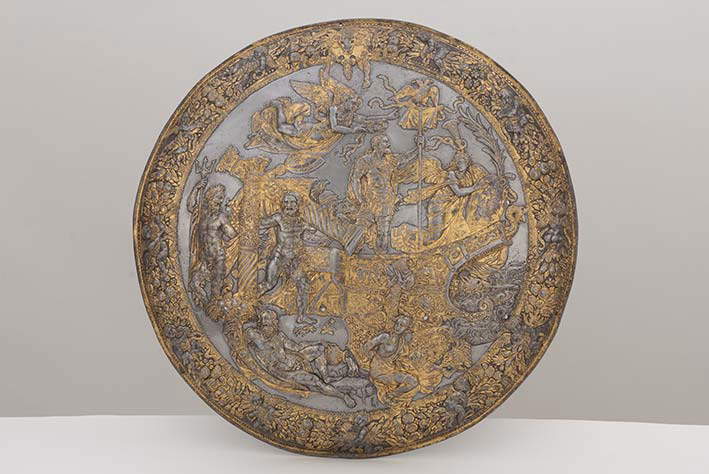

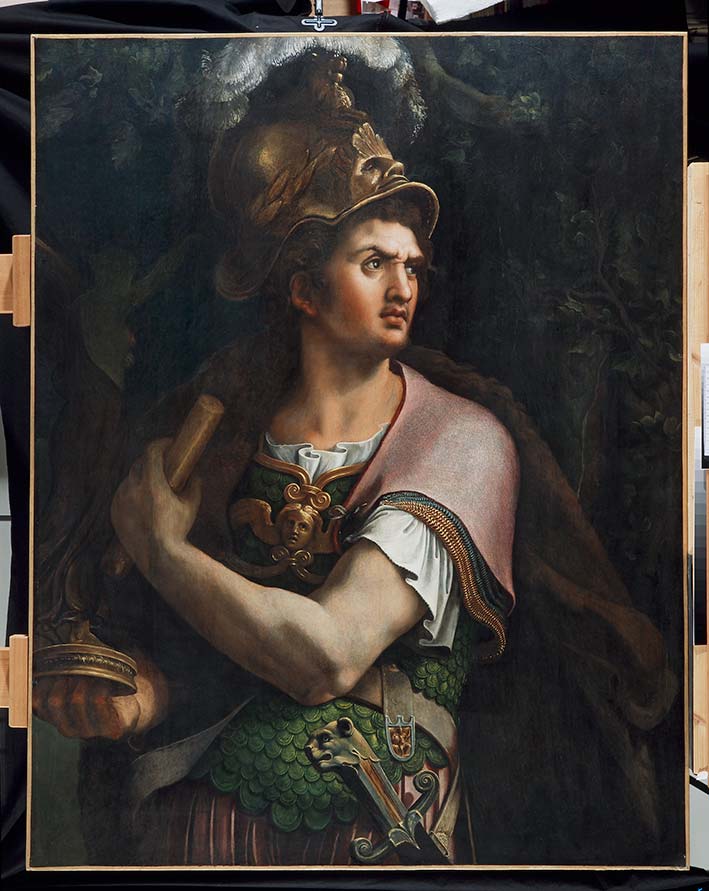
The exhibition consists of five sections. The first section, in the Emperors’ Room, is entirely devoted to the design for arms and armor, objects that were so prominent in court life. A unique and exceptional case in which Giulio Romano’s design and object have survived to us, the Giulio Romano design for Charles V’s shield and the shield itself (Haarlem, Teylers Museum and Madrid, Patrimonio Nacional, respectively) are displayed here. Other valuable comparisons offered in this room to visitors include: a Giulio Romano design for the sword hilt of Frederick II Gonzaga (London, British Museum) and a similar sword (Vienna, Kunsthistorisches Museum, Hofjagd- und Rüstkammer); a rarely exhibited painting by Giulio Romano, depicting Alexander the Great in arms (Geneva, Musée d’Art et d’Histoire), juxtaposed with a book of designs for armor by the Mantuan Filippo Orsoni (London, Victoria and Albert Museum) and a borgognotta by Ferdinand II of Tyrol (Vienna, Kunsthistorisches Museum, Hofjagd- und Rüstkammer). Two pieces of parade armor made by the Negroli brothers, famous Milanese armorsmiths (Florence, Bargello Museum), resonate with Juliesque imagery teeming with grotesque masks and mythological creatures capable of playfully instilling awe and conveying messages of power and masculinity.
In the Candelabra Room, the second section shows how even the greatest artists of the 16th century designed objects animated by exuberant human figures , thereby creating narratives similar to those illustrated in frescoes and paintings. Presented here are some graphic masterpieces of this genre: a salt cellar designed by Michelangelo for the Duke of Urbino (London, British Museum); and two designs for sacred and secular silverware (Turin, National University Library, and American private collection, respectively), by the hand of Francesco Salviati, who, along with Giulio Romano, was one of the most prolific designers of the 16th century. In Jacopo Zucchi’s painting (Rome, Palazzo Barberini) displayed in the same room, the sinuous softness of the bodies is juxtaposed with precious vases of fanciful shapes, suggesting for both works a response that is not only aesthetic but also tactile.

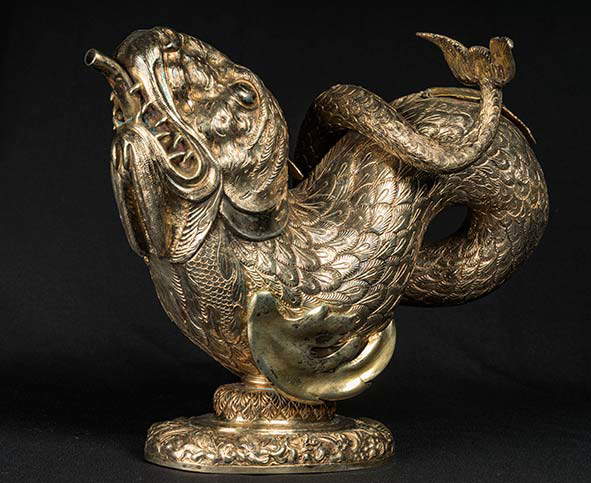


The third section, set up in the Sala delle Cariatidi, is entirely devoted to thegraphic work of Giulio Romano. On display here is a wide selection of projects in which the artist combines ancient or old-fashioned models with natural elements, such as leaves or racemes, and animals, such as swans and sea monsters, producing strikingly imaginative images. Through this practice, Giulio masterfully interpreted the Gonzaga family’s need to make the dining experience unique and unforgettable.
In the Camera dei Capitani, the fourth section seeks to recreate the atmosphere of splendor that characterized thesixteenth-century banquet experience. A precious tapestry designed by Julius, with a boarding house and a rich sideboard (Rome, Palazzo del Quirinale), provides the ideal setting to display a selection of the objects intended to enrich European princely tables (the objects come from the Victoria and Albert Museum, the Kunsthistorisches Museum, and the Uffizi). If the variety of forms of the designs on display here illustrates the imaginative creativity of the 16th-century artists, the objects themselves enhance the excellent technical mastery of their contemporary goldsmiths, whose skill is celebrated in the portrait of Martin Marquart by Maarten de Vos (Vienna, Kunsthistorisches Museum).
The exhibition concludes with the fifth section in the Camera delle Vittorie. Here four designs by Giulio Romano are on display-two jugs for Hercules and Ferrante Gonzaga, a salt cellar supported by three goats, and a bizarre pincer in the shape of a duck’s beak-along with their respective three-dimensional reconstructions made by Factum Arte.
The exhibition is accompanied by a catalog published by Marsilio Arte, edited by Barbara Furlotti and Guido Rebecchini with the collaboration of Antonio Geremicca, with essays by Jasmine Clark, Adriana Concin, Barbara Furlotti, Davide Gasparotto, Antonio Geremicca, Marco Merlo, Guido Rebecchini and Linda Wolk-Simon, and an introduction by Stefano Baia Curioni.
The exhibition is accompanied by a catalog published by Marsilio Arte, edited by Barbara Furlotti and Guido Rebecchini with the collaboration of Antonio Geremicca, with essays by Jasmine Clark, Adriana Concin, Barbara Furlotti, Davide Gasparotto, Antonio Geremicca, Marco Merlo, Guido Rebecchini and Linda Wolk-Simon, and an introduction by Stefano Baia Curioni. For more info: https://www.centropalazzote.it/
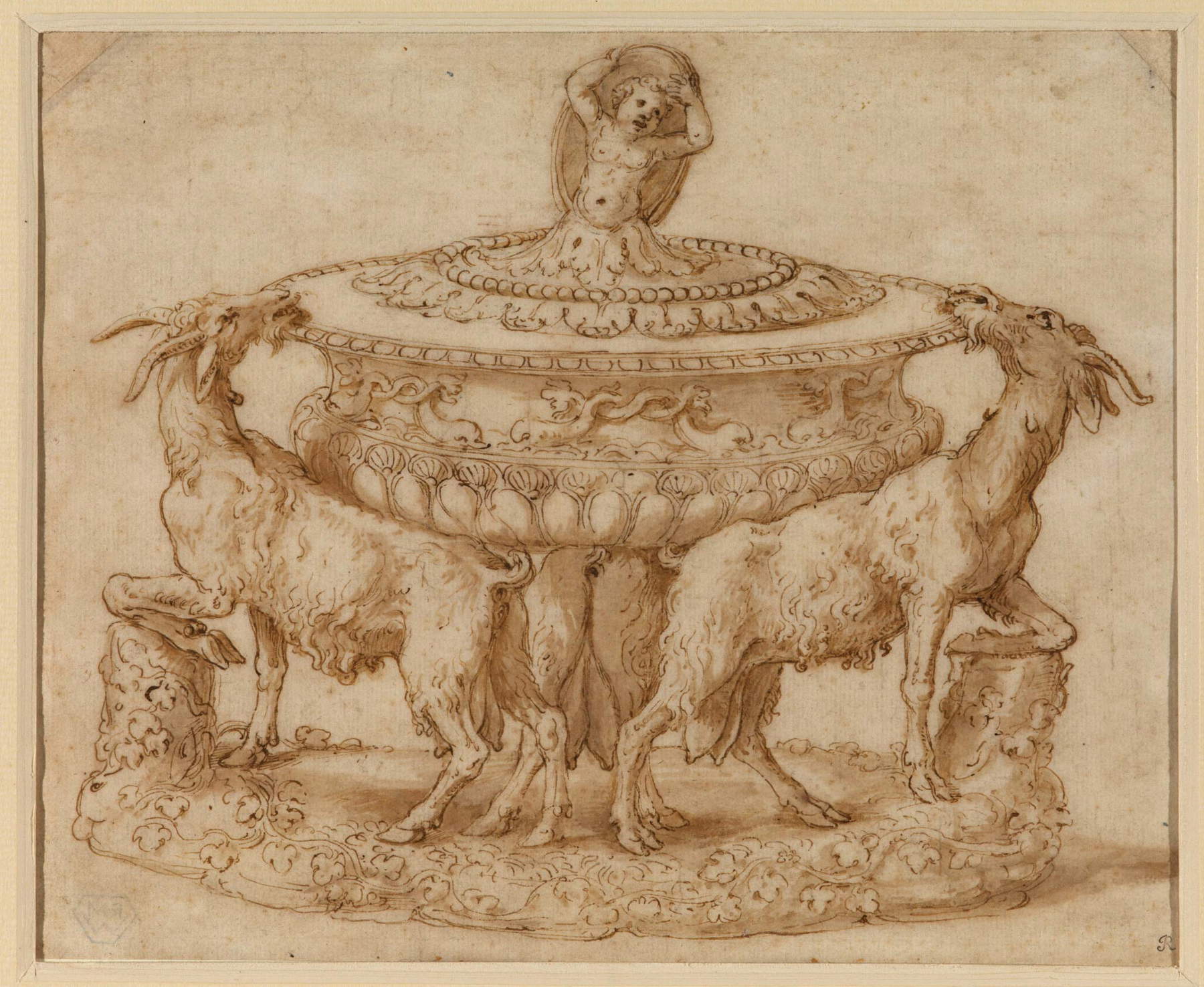
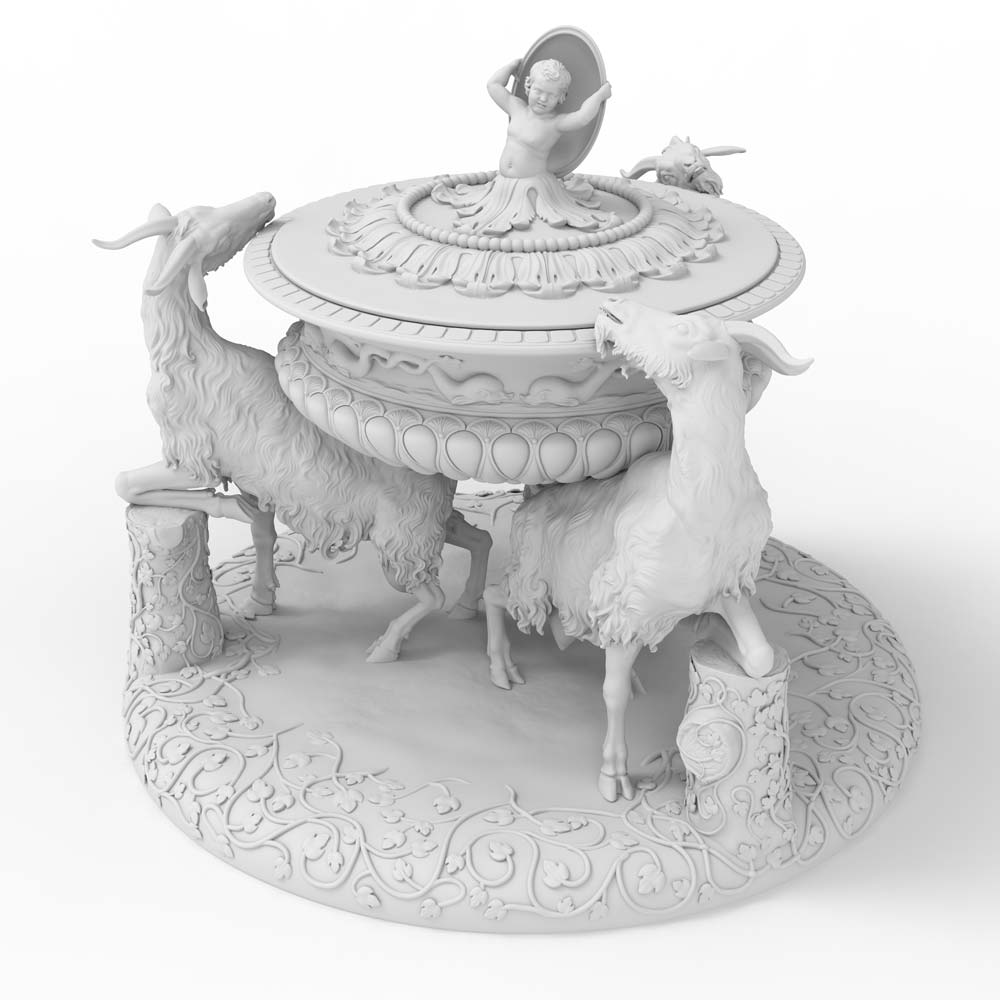
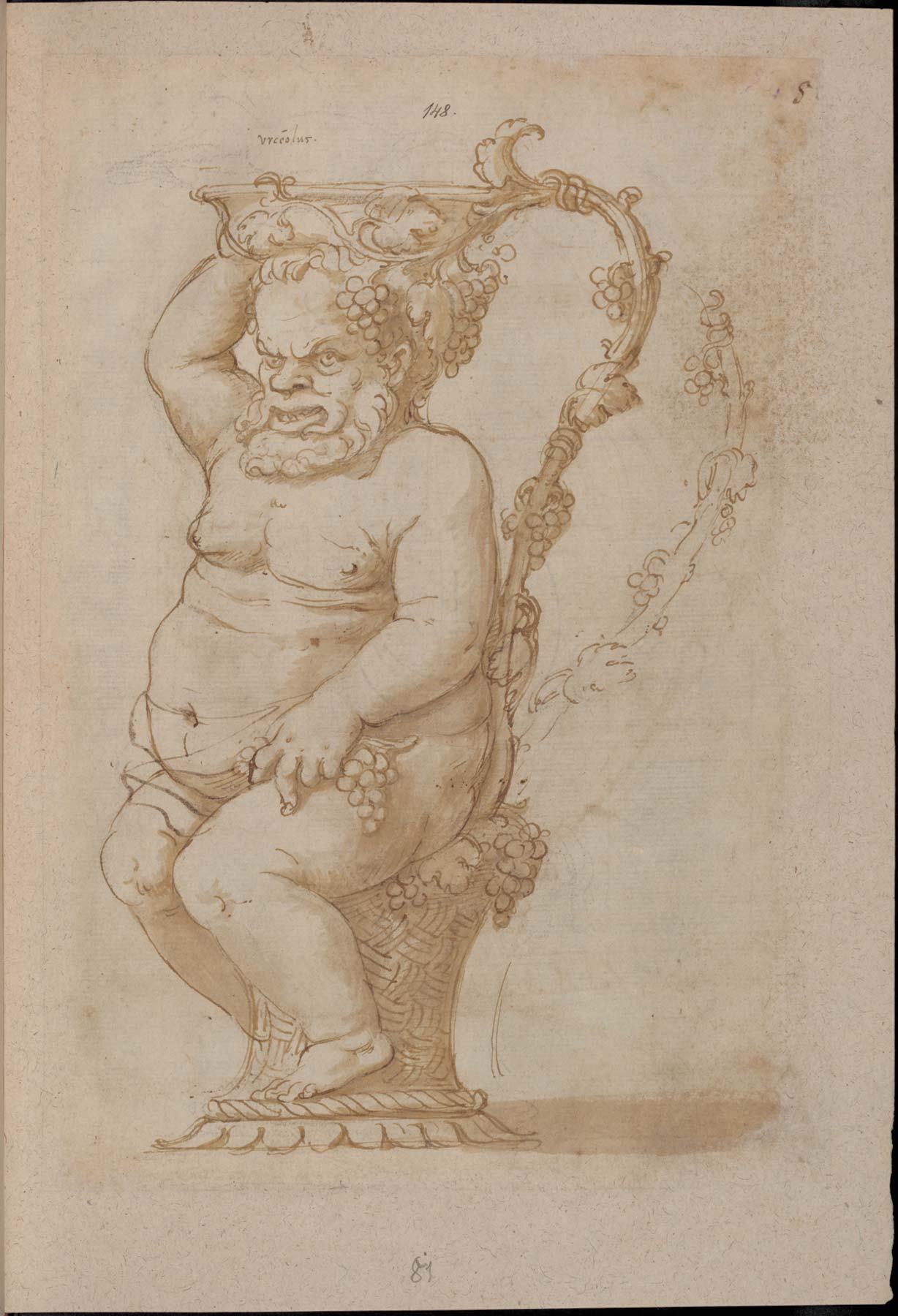
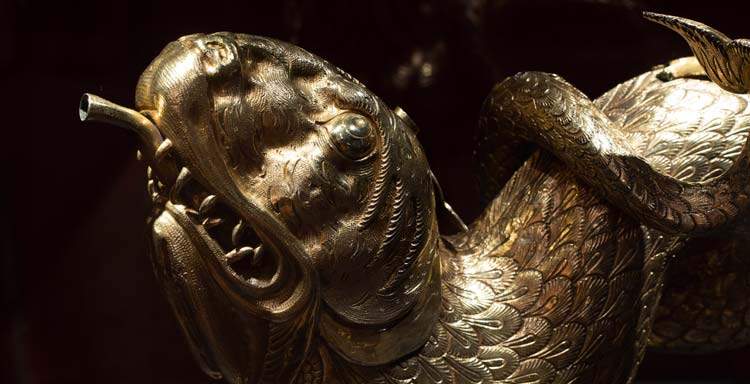 |
| Giulio Romano designer for the Gonzaga court. An exhibition on the subject is coming to Mantua. |
Warning: the translation into English of the original Italian article was created using automatic tools. We undertake to review all articles, but we do not guarantee the total absence of inaccuracies in the translation due to the program. You can find the original by clicking on the ITA button. If you find any mistake,please contact us.